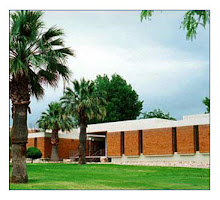
Thursday, January 29, 2009
Thursday, January 22, 2009
Easy way to earn $200 a month at the plasma donation center in St. George


BioLife Plasma Services in St. George
816 N. 2860 E. Street (next to Costco)
BioLife Plasma Services is an industry leader in the collection of high quality plasma that is processed into life-saving plasma-based therapies.
BioLife operates and maintains numerous state-of-the-art plasma collection facilities throughout the United States and collects nearly 3 million liters of plasma per year, helping hemophiliac and cancer patients as well as burn and trauma units with the donations of plasma.
The process of getting the plasma entails inserting a needle in the donor’s vein, and pumping blood into a specialized spinning device that separates the plasma from the cellular components of the blood, such as red and white blood cells and platelets.
While the plasma is collected, the other blood components are pumped into a reservoir. Once the reservoir is full, the red and white blood cells and platelets are returned to the donor’s body.
Throughout the process, the system automatically alternates between collection and re-infusion until the predetermined amount of plasma is obtained, based on your weight.
The tubing and all other collection supplies that come in contact with your blood are discarded and replaced with new, sterile materials each time a donation procedure is performed. Your blood never enters the machine.
When people donate blood they can’t get that blood back right away, but plasma is different. Plasma will automatically replenish itself in one’s body. When people give blood they feel weak, but when people donate plasma that doesn’t occur and they can go right back to school or work without having any of those symptoms.
So if you are looking for extra cash, you can donate up to two times a week and earn up to $240 a month. The payment system credits the money onto a debit card for you…you can just keep going in, and they automatically fund the card with the amount each time.
People are paid according to how long they donate.
The average length of time it takes to donate is 2 ½ hours for the very first visit, to go through the questions process, but the next visits are on average of 45 to 60 minutes long, which includes the time it takes to answer some health questions at the beginning of each session.
BioLife operates and maintains numerous state-of-the-art plasma collection facilities throughout the United States and collects nearly 3 million liters of plasma per year, helping hemophiliac and cancer patients as well as burn and trauma units with the donations of plasma.
The process of getting the plasma entails inserting a needle in the donor’s vein, and pumping blood into a specialized spinning device that separates the plasma from the cellular components of the blood, such as red and white blood cells and platelets.
While the plasma is collected, the other blood components are pumped into a reservoir. Once the reservoir is full, the red and white blood cells and platelets are returned to the donor’s body.
Throughout the process, the system automatically alternates between collection and re-infusion until the predetermined amount of plasma is obtained, based on your weight.
The tubing and all other collection supplies that come in contact with your blood are discarded and replaced with new, sterile materials each time a donation procedure is performed. Your blood never enters the machine.
When people donate blood they can’t get that blood back right away, but plasma is different. Plasma will automatically replenish itself in one’s body. When people give blood they feel weak, but when people donate plasma that doesn’t occur and they can go right back to school or work without having any of those symptoms.
So if you are looking for extra cash, you can donate up to two times a week and earn up to $240 a month. The payment system credits the money onto a debit card for you…you can just keep going in, and they automatically fund the card with the amount each time.
People are paid according to how long they donate.
The average length of time it takes to donate is 2 ½ hours for the very first visit, to go through the questions process, but the next visits are on average of 45 to 60 minutes long, which includes the time it takes to answer some health questions at the beginning of each session.
Thursday, January 8, 2009
Time rolls on

We’re into a new year and a new month and time just rolls along….not waiting for anyone or anything.
Christmas has come and gone in St. George, just like it has where you live. We each spent the holidays in our own special way and are now continuing to go forward to see what each new day of this brand new year will bring into our lives.
St. George continues to grow in population with new businesses sprouting up all the time. More and more places to eat seem to be what opens up the most.
We are hopeful, just like you that 2009 will be good to all of us, and that we will do what we can to make it a good year.
Subscribe to:
Posts (Atom)


















